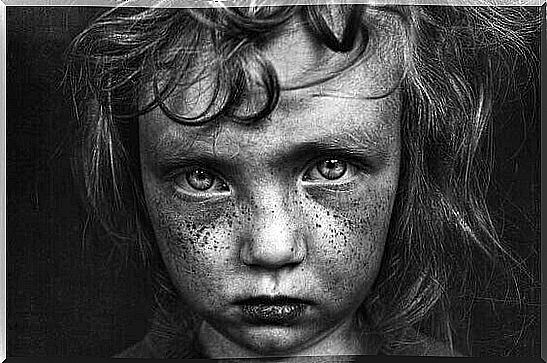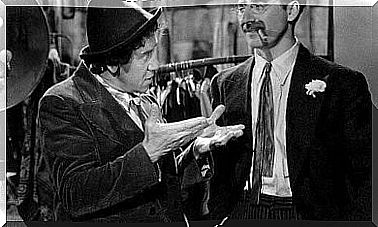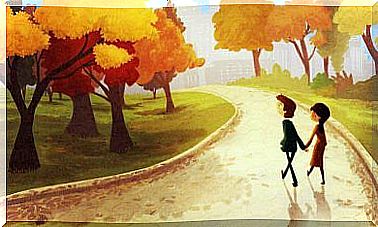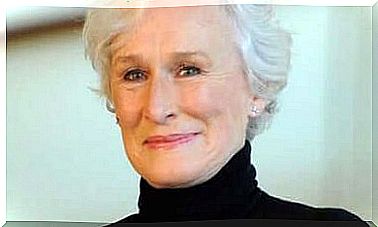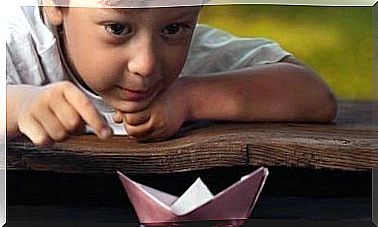The Weight Of The Open Wound: When The Victim Becomes An Executioner

The open wound sometimes forms an abyss infected with resentment, anger and vulnerability. It is experienced by some of those who have been abused, abandoned or abused. The scars of these experiences and the inability to heal them often cause them to project this deep discomfort onto others. This sometimes reveals inappropriate behavior.
Everyone treats pain in their own way, with varying degrees of skill. But there are those who do it in the worst possible way: aggressively. The reason ? There are profiles in which several determining factors are suddenly combined. On the one hand, there is the seriousness of the trauma suffered; on the other hand, the social and support resources available to the person, as well as certain biological and even genetic factors.
However, the most determining factor is undoubtedly that of personality. We know, for example, that some people characterized by reactive narcissism use their pain as a weapon of projection. Their identity as victims, and the weight of a past of ill-treatment, often and almost involuntarily transform them into camouflaged executioners. These are people who cannot control the retaliatory impulse and project their anger at others in different ways.

When the open wound of trauma generates aggression
The notion of “victim” as such is often the subject of much discussion. One thing we need to understand first is that not everyone treats trauma the same. There are those who, thanks to their psychological resources or the good support they receive, effectively cope with a dramatic event by quickly detaching themselves from their identity as a victim.
Others, on the other hand, for a large part of their life integrate lesions, open wounds which, in a certain way, leave more and more after-effects. Post-traumatic stress disorder, for example, is one such effect. Now the question that may come to mind is why this is happening. Why a person who, far from overcoming this painful fact of the past, carries it with him like a burden?
Also, is there an explanation why a person exposed to traumatic events might react inappropriately or violently at a given moment? At the University of Monterotondo, Italy, an interesting study was conducted on the subject, led by Dr Giovanni Frazetto.
Here is the data they were able to obtain.
Early trauma and MAOA gene
According to this work done in 2007, exposure to certain negative events during our first 15 years of life usually leaves an obvious mark on our emotional and psychological fabric. However, while some people will be more likely than others to overcome or face these facts, others will present some difficulty.
- The latter group includes people who carry the MAOA gene, which is mainly linked to males.
- This gene is in turn associated with a very specific behavioral phenotype, that of greater aggressiveness.
- Therefore, the study found that children who grew up without a parent, who were neglected, abused, or who grew up in an environment with alcoholism problems, exhibited more aggressive and antisocial behavior when have become adults
- This has also been associated with a greater propensity for drug abuse, as well as an obvious difficulty in establishing strong and meaningful social and emotional relationships.
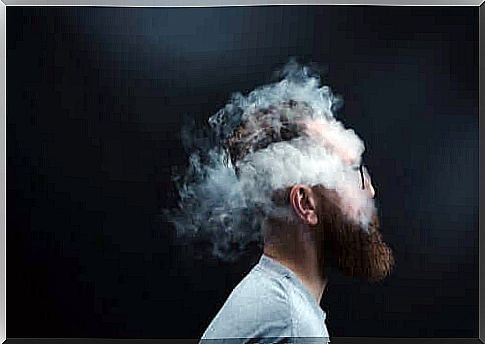
The open wound and vulnerability that prevent us from perceiving the pain of others
An open wound is an unresolved problem that plagues us more and more every day. It is a way of perpetuating the identity of victim because we do not define ourselves primarily by what we do today, but by what has happened to us in the past. There are those who are so trapped in their vulnerability, in repressed anger, in fear that does not allow them to breathe and in the weight of memory who, almost without realizing it, develop “emotional blindness”. .
They stop seeing and perceiving emotional realities foreign to their own. This lack of empathy stems from the open wound itself, this trauma that generates changes in the brain and ultimately changes the personality. What is more complicated is that at some point, someone who feels like a victim can become an executioner.
- For example, the adolescent who suffers from abuse or abandonment at home and who behaves violently at school
- This is also the case with the person who at times feels so vulnerable and helpless that they overreact to defend themselves.
- The open wound can lead to understanding violence as a form of language. If, as children, we have witnessed or been the victims of aggressive behavior, it is likely that in adulthood we will end up applying these same models.
How are open wounds and trauma treated?
Without a doubt, the most appropriate approach to treating trauma today is trauma -focused cognitive behavioral therapy. This tool also has an important scientific bibliography which confirms its effectiveness (Echeburúa and Corral, 2007; Cohen, Deblinger and Mannarino, 2004).
On the other hand, we also rely on acceptance and therapeutic commitment (Hayes, Strosahl, Wilson, 1999, 2013). This is a third-generation type of cognitive behavioral therapy that aims to reduce anxiety and fear. The goal is to better manage dangerous situations.
Also, and no less important, it is necessary to work on anger control in case it has already made an act of presence. Something like this starts to be evident from childhood. We know, for example, that about 45% of children who witness domestic violence have behavioral problems.
Behind the open wound hides anxiety, sadness, anger. But also a series of mental images that we cannot erase. Such dramatic realities must be dealt with by specialized professionals. No one deserves to live in a present where suffering extinguishes their potential for happiness.
